
How to Select the Best AI Voice API in 2025
Avalon Brooks
November 26, 2025
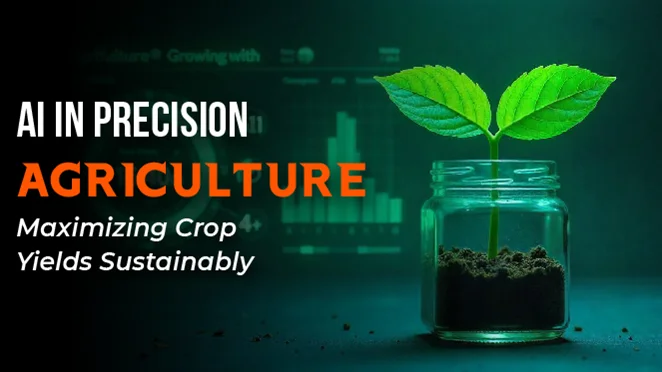
In recent years, precision agriculture has garnered considerable attention in the agriculture industry. The integration of advanced artificial intelligence (AI) technologies and data-driven insights has wholly transformed traditional farming practices, providing innovative solutions to increase crop yields while enhancing sustainability.
Moreover, as the global populations continue to evolve, the need for efficient, recourse-conscious agricultural practices becomes more crucial. AI-driven technologies are continuously reshaping the agricultural landscape, allowing farmers to optimize resource use, enhance crop health, and reduce waste.
Additionally, by utilizing the power of AI, precision agriculture can not only boost productivity but also enhance eco-friendly practices.
In this article, we’ll explore how AI is changing the landscape of precision agriculture and paving the way for a sustainable agriculture sector.
Precision agriculture is a term used to describe farming tools for observing, measuring, and responding to within-field variability through crop management. It is also referred to as smart farming. Generally, this approach uses advanced technology to optimize farming practices, improving the efficiency, productivity, and sustainability of agricultural operations.
Usually, it involves the application of various technologies such as GPS, GNSS, drones, and sensors to analyze and manage crop and soil health in real-time. By harnessing these technologies, farmers can make data-driven decisions, optimize resource usage, and enhance overall farm efficiency—which we will discuss in depth further.
In short, the goal is to apply the right amount of resources at the right time and in the right place, minimizing waste, maximizing crop yields, and decreasing environmental impact.
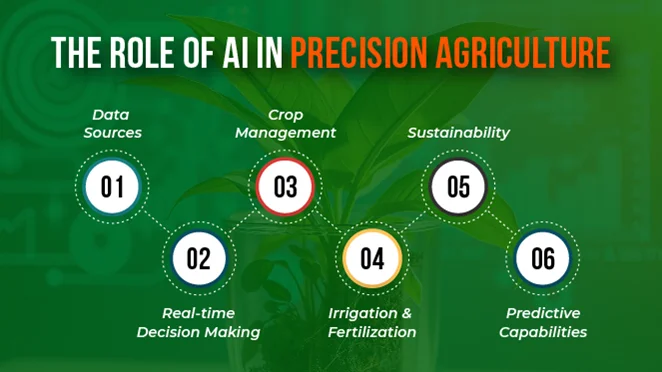
Before we get deeply immersed in this article, it is essential to discover the role of AI in precision agriculture. This will help you understand the importance of bringing advanced techniques to modern farming.
| Key Aspects | How AI Enhances Precision Agriculture? |
|---|---|
| Data Sources | AI gathers and analyzes data from drones, satellites, and sensors to provide a detailed view of the farm. |
| Real-time Decision Making | It helps you make informed decisions by processing vast amounts of data quickly, assisting in timely interventions. |
| Crop Management | AI helps optimize crop management by foreseeing yields, detecting diseases, and recommending actions for better care. |
| Irrigation and Fertilization | With AI, irrigation and fertilization schedules can be adjusted based on current environmental data to ensure optimal crop health. |
| Sustainability | AI fosters sustainable farming by reducing resource waste, reducing chemical use, and conserving water. |
| Predictive Capabilities | AI’s predictive abilities help analyze future trends, such as crop performance and pest outbreaks, for more proactive measures. |
Data collection and sensors play a significant role in precision agriculture, providing essential insights that allow farmers to streamline their operations and make informed decisions accordingly. Let’s explore different types of data collection and sensors and their role in precision agriculture.
Usually, farmers collect data on the following trends to make data-driven decisions:
Some common sensors used in precision irrigation and crop production are:
| Sensors | Use Cases |
|---|---|
| Soil Sensors | These are used to track soil composition, moisture, and temperature for better soil management. |
| Weather Sensors | They provide real-time data on temperature, humidity, rainfall, and other weather conditions to inform decisions. |
| Crop Monitoring Sensors | These sensors detect plant growth patterns and early signs of pests or diseases for proactive management. |
We have discussed the types of data collection and sensors used in modern farming. Now, you must be wondering how AI helps farmers with data processing. Usually, AI analyzes and processes large data sets from sensors and other sources.
This allows farmers to make accurate adjustments in farming techniques, such as tailoring irrigation and fertilization to specific crop needs. Thus, it helps promote both crop yield and sustainability.
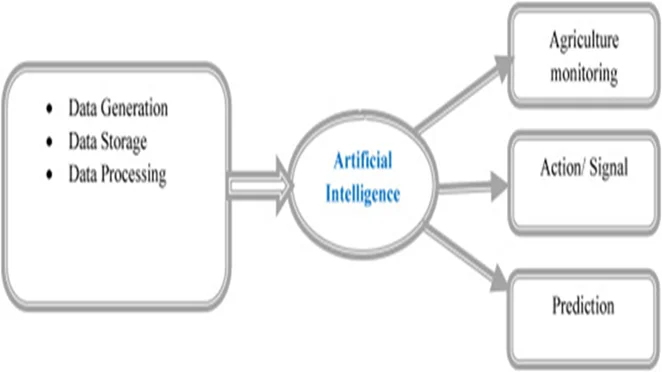
Precision farming is transforming the agriculture industry with advanced and cutting-edge technologies. Let's discuss some of the key technologies that substantially help modify the agricultural landscape.
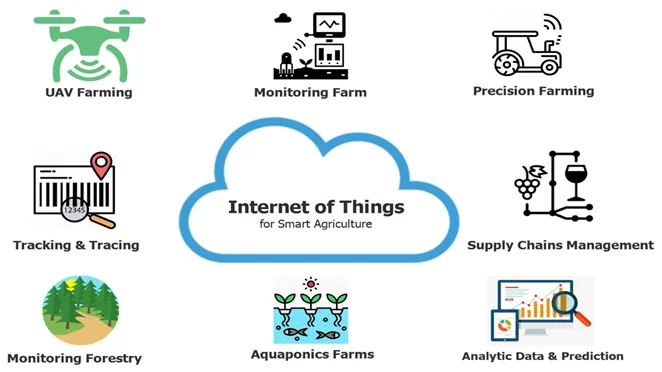
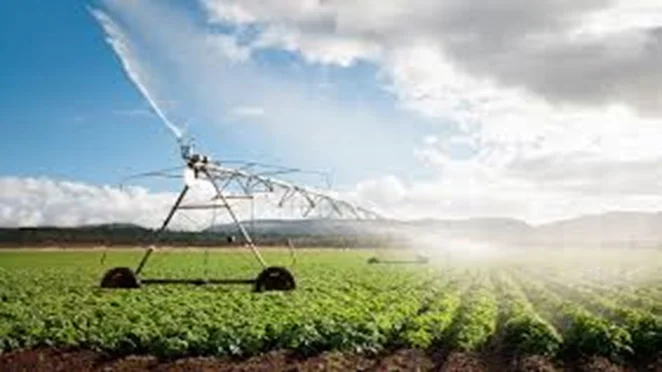
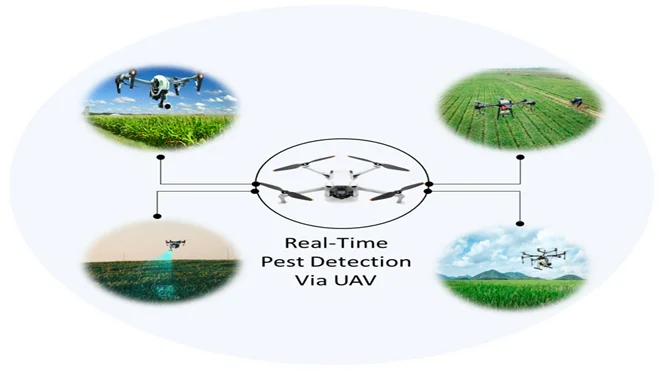
As we have discussed modern innovations in precision agriculture, how can we ignore the impact of machine learning on crop health and monitoring? AI significantly uses machine learning models to learn crop behaviors and predict interventions, ultimately yielding more crops.
Here’s how:
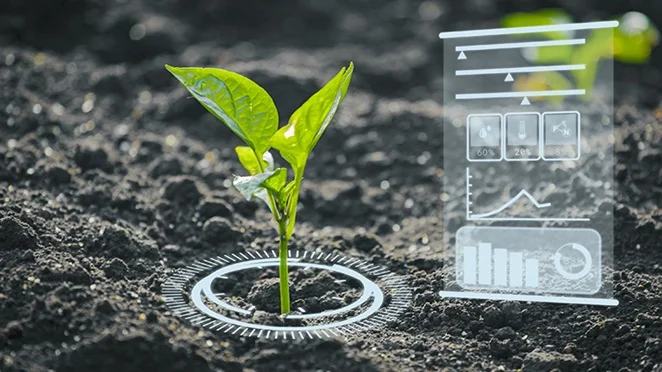
AI in precision agriculture implements machine learning algorithms to monitor crop health by revealing bulk amounts of data collected from sources like soil sensors, weather stations, drones, and crop imaging devices.
These algorithms visualize patterns and trends that may not be visible to the human eye, making farmers make data-driven decisions that improve crop health and increase its growth.
For example, machine learning plays a significant role in detecting plant diseases early. By frequently analyzing data such as leaf color, plant shape, and soil moisture levels, AI can detect signs of diseases or pest infestations before they become out of control.
Early detection can help minimize crop loss, reduce the need for chemical treatments, and promote a more suitable approach for managing high crop quality.
Predictive analytics is also an advanced AI technology that allows farmers to anticipate issues such as disease outbreaks, pest infestations, and weather-related risks beforehand.
Machine learning algorithms analyze past and current data to create potential future scenarios. This allows farmers to make timely choices about planting, irrigation, fertilization, and harvesting.
For example, if AI systems anticipate an increased risk of disease due to upcoming changes in humidity, farmers will adjust their crop management strategies accordingly, overall enhancing crop productivity.
Moreover, predictive analytics also assist farmers in increasing crop yield.
AI models can suggest precise planting time and harvesting schedules by determining factors like soil fertility, past crop performance, and seasonal climate changes.
Though we have explored ML and predictive analytics' contributions to crop health, it is equally important to uncover how AI optimizes resources efficiently, streamlining the overall farming process for improved sustainability and productivity.
AI systems in modern farming gather insights from sensors, drones, and satellite imagery to assess soil, crop, and weather conditions.
This data-driven approach enables AI algorithms to identify the crop's exact resource needs, reducing waste and enhancing efficiency.
AI-driven irrigation systems utilize real-time data on weather, soil moisture, and crop requirements to adjust water distillation accordingly. Unlike traditional fixed schedules, AI calculates water levels and delivers them only when needed.
Overall, it reduces water consumption substantially and supports sustainable water management.
Additionally, AI-powered systems analyze soil and crop health to suggest accurate amounts and timings for applying fertilizers and pesticides.
By adjusting based on plant growth stages and pest risks, AI can significantly help reduce excess chemical use, improve crop yield, and minimize environmental impact.
As traditional approaches require a lot of energy, AI helps manage farm equipment operations by automating and scheduling tasks like plowing or harvesting, which suffer lower energy demand time.
This scheduling reduces energy costs and emissions, adding to more sustainable and eco-friendly farming practices.
AI offers predictive analytics that enables you to anticipate resource requirements by reviewing historical data, weather patterns, and crop growth stages.
This information helps you to manage resources proactively, minimizing the chance of shortages or abundance and improving overall field efficiency.
Overall, AI’s resource optimization brings sustainability by minimizing excess water, chemical use, and energy consumption.
By lowering waste, promoting sustainable farming practices, and increasing productivity, AI helps farmers meet production goals while minimizing ecological disadvantages
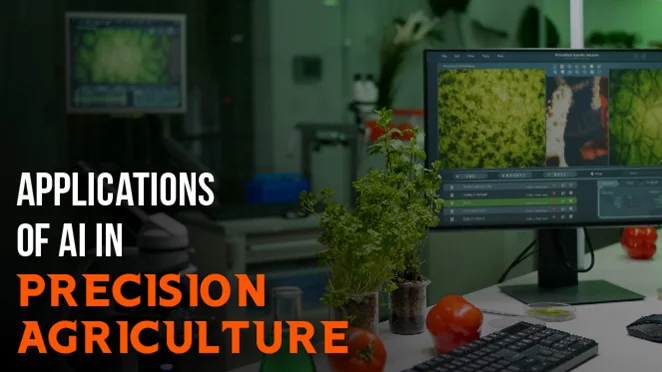
In recent years, the number of farmers utilizing AI, IoT, and other technological advances to boost the productivity of their fields has substantially increased. In this section, we’ll discuss the potential applications of precision agriculture and how they are benefiting farmers.
Notably, AI technology helps anticipate weather and other agricultural conditions, such as land quality, water level, crop cycle, and disease detection. All these are essential issues that are made easy now with AI.
Moreover, many businesses are using predictive analytics and precision farming techniques powered by AI to boost agricultural output.
Overall, the integration of AI in the agriculture business has transformed the results of farming operations.
AI has enabled farmers to detect soil and growing conditions, gather data, and automate manual tasks. Before AI, farmers struggled to choose the right time to plant seeds due to weather conditions.
Now, they can monitor every change beforehand and intervene accordingly. Moreover, they can also analyze weather conditions to plan what type of crop can be cultivated and the right time to plant a specific seed. All these predictions and analyses lower the risk of crop failure and yield healthier crops.
By using self-driving tractors and IoT, businesses can solve the prevalent issue of labor shortages. Moreover, these technologies are more accurate and make fewer errors, and in the long term, they prove to be cost-effective.
Besides AI, self-driving tractors, and IoT, robotics is also increasing gradually. Businesses are incorporating agricultural robots for many activities, such as harvesting fruits and trimming lettuce.
Additionally, AI in agriculture is helpful in analyzing resource use and identifying excess consumption. By detecting these things, various optimization techniques are suggested, enhancing overall sustainability.
Moreover, through predictive maintenance and livestock health monitoring, AI significantly helps lower costs linked with veterinary services and machinery upgradation.
Furthermore, by enhancing crop yields and minimizing operational costs, AI automatically uplifts profitability without demanding any additional resources.
Additionally, AI is also helping farmers by providing data-driven suggestions on water use, crop rotation, pest control, and harvest timing.
Machine learning algorithms review satellite and drone images to detect crop health and predict weather, helping in efficient farming practices.
Furthermore, by monitoring groundwater, moisture level, and other important factors, farmers can maximize agricultural yields.
Well, it is not done yet. AI is reshaping agriculture dynamically. It also transforms farm-level fund management by providing real-time monitoring, mitigating the need for manual investigation. Smart technology enables financial organizations to monitor crop health throughout the cultivation cycle, enhancing data precision and informed decision-making.
Moreover, as IoT and AI become more approachable, the agricultural landscape can utilize these tools to improve efficiency through thoughtful solutions.
Before we implement AI technology in any field, it is necessary to consider its potential challenges. To address the challenges of AI in precision agriculture, here’s a breakdown:
Enough of the theoretical aspects; let’s talk about the numbers and success stories of AI in precision agriculture. This will highlight how AI is booming in the agricultural industry.
| Real-world Application | Description | Case Studies Examples | Source |
|---|---|---|---|
| AI for Crop Yield Improvement | Integrating AI-powered precision agriculture results in crop yield that can increase by approximately 15-20%. | For example, Farmonaut’s satellite-based monitoring system has indicated that precise water and fertilizer management can boost crop yields by up to 15%. | https://www.farmonaut.com/ |
| Water Conservation | AI-driven water management systems can aid in reducing water consumption by around 30-40%. | For instance, tools like Trimble’s precision irrigation system automate water schedules based on live soil and weather data. It helps save water significantly and is valuable in areas where water conversion is crucial. | https://ww2.agriculture.trimble.com/solutions/water-management/ |
| Improving Crop Quality and Reducing Waste | AI detects crop health, monitors nutrient deficiencies, and targets pest control accurately. | For example, John Deere’s See & Spray technology precisely targets weeds, diminishing herbicide use and helping protect crop health. | https://www.deere.com/en/ |
| Accurate Pest Management | AI enables pest management tools to decrease pesticide use by 20%, lowering costs and environmental impact. | For instance, PrecisionHawk & Skycision pest monitoring systems analyze pest hotspots and apply treatment only where needed. | https://www.agritechtomorrow.com |
| Quick Harvesting Options | AI-powered models and automated robots enhanced harvest timing and reduced labor costs by 15-20%. | Robotics Plus & Agrobot offers agricultural robots that determine the best harvest times and seed planting for specific crops. | https://www.roboticsplus.co.nz/ |
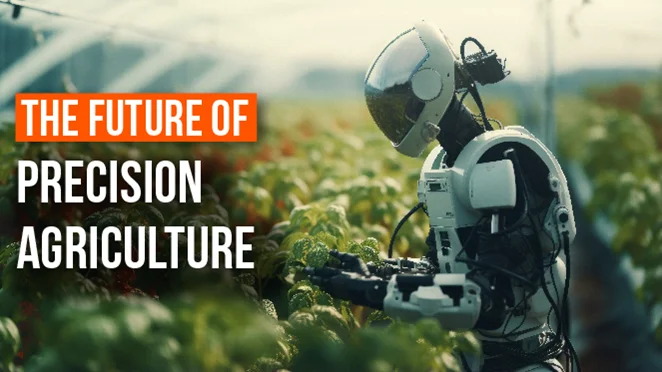
The advancement and future potential of AI in agriculture is uncanny. According to our AIChief team analysis, AI, IoT, and robotics in the agriculture industry are likely to grow exponentially in the coming years.
That’s all from our side. In conclusion, AI has radically changed modern agriculture. It brings uncanny levels of efficiency and sustainability to farming. Our team at AIChief gathers real-time examples and information to give you the most updated insights on the current role of AI in precision agriculture.
In a nutshell, by utilizing bulk data, AI and machine learning enable farmers to make informed decisions that enhance resource efficiency, reduce waste, and optimize crop yields. Moreover, as AI continues to grow, its role in agriculture will likely boost, addressing the global need to increase food production sustainably by 2025.
Precision agriculture is defined as the application of advanced technologies and data-driven approaches to enhance traditional farming practices. These advanced technologies aim to optimize productivity and promote sustainable farming practices.
Absolutely. AI can predominately aid in pest and disease control by determining early signs of disease using machine learning models or by analyzing crop images and sensor data.
AI makes a significant contribution to promoting sustainable farming. It helps farmers optimize resource use, reduce waste, and lower their environmental footprint.